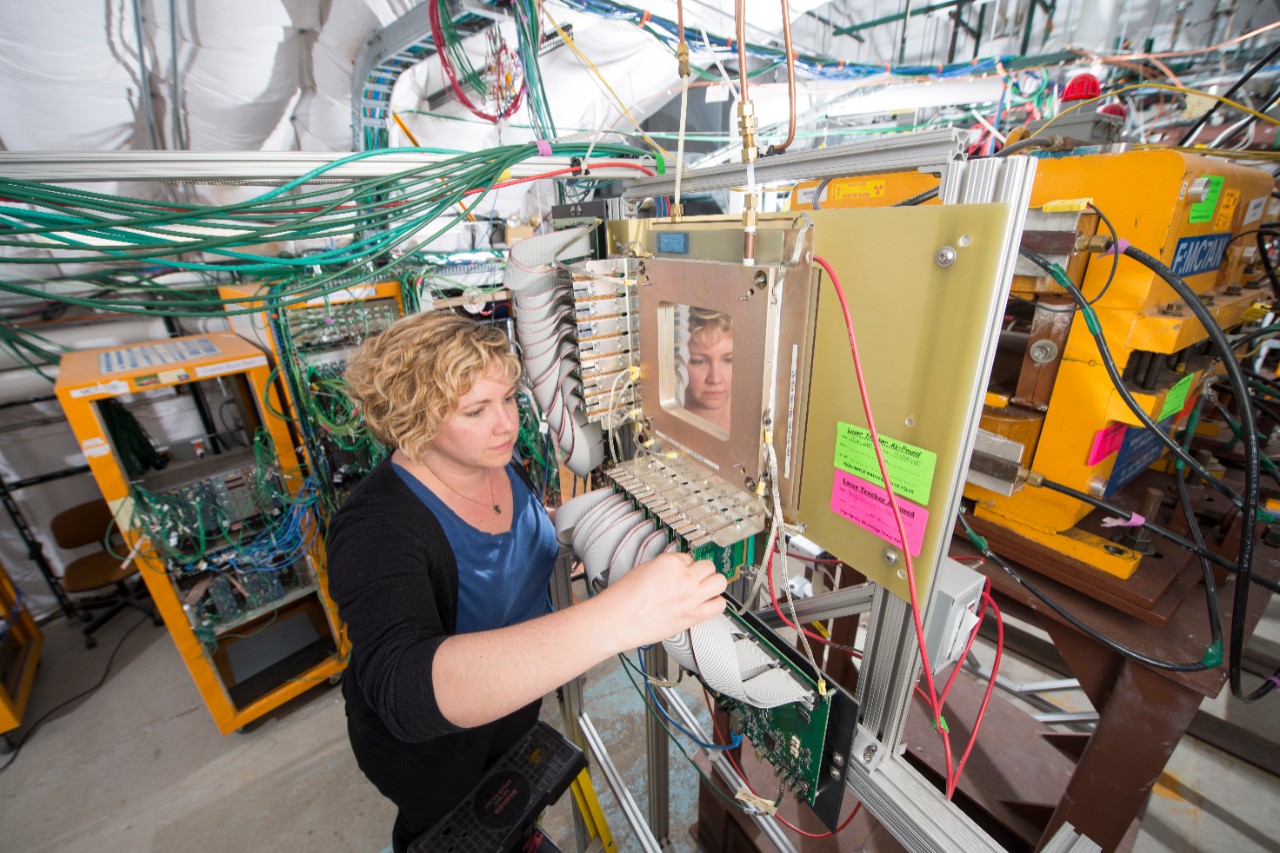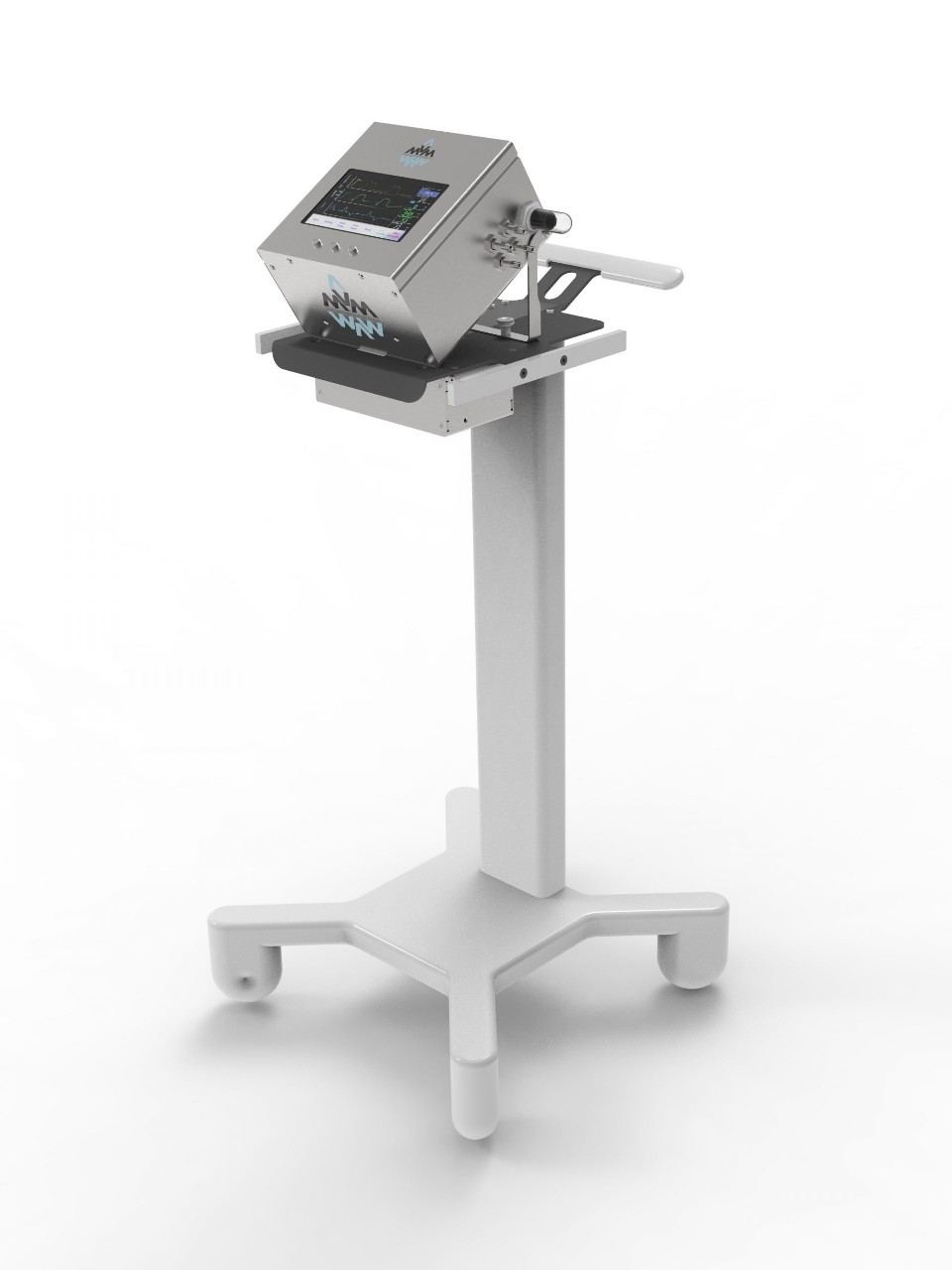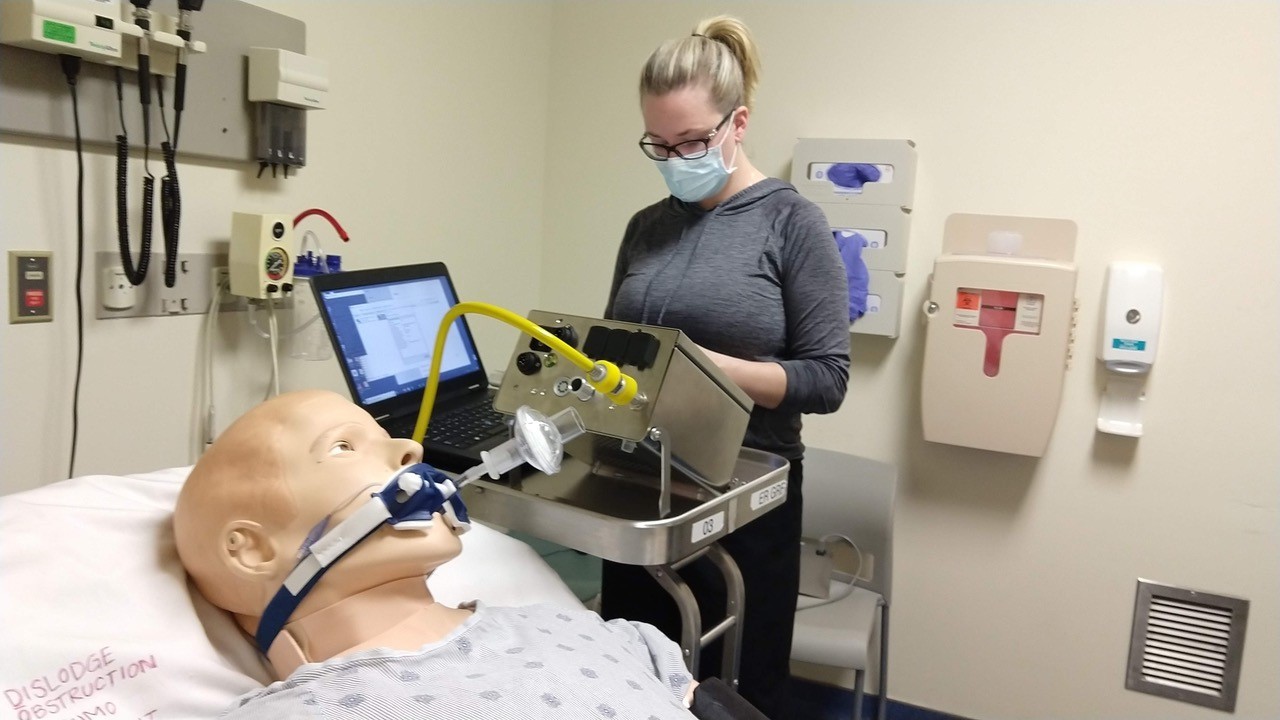
UC grad provides ventilators for COVID-19 victims
Physicists and engineers around the world contributed to the project
A University of Cincinnati physics graduate is helping to meet a global ventilator shortage in the wake of COVID-19.
UC alumna Jennifer Raaf, a particle physicist at the Fermi National Accelerator Laboratory in Illinois, is part of an international team of scientists and engineers who won federal regulatory approvals for a simple ventilator that could be produced quickly with common parts.
Raaf, a graduate of UC’s College of Arts and Sciences, helped steer the project through successful approvals with the U.S. Food and Drug Administration for use at hospitals in the United States during the pandemic.
Production on the ventilators is set to begin this month.

Fermilab outside Chicago, Illinois. Photo/Reidar Hahn/Fermilab
Raaf said working as an experimental physicist provided unique qualifications to tackle the challenge.
“Physicists aren’t afraid to come at a problem we have no idea how to solve. It’s exactly what we’re trained to do,” Raaf said.
“We’re used to working with large groups across many time zones and with many deadlines,” she said. “We were well suited to come together to do this. Even so, it was amazing to me how fast we could get something designed and approved.”
Italian physicist Cristiano Galbiati, of Princeton University and Gran Sasso Science Institute, started the project in March. While in quarantine in Milan, where he conducts dark matter research, Galbiati grew alarmed by reports about the growing scarcity of ventilators to treat victims of coronavirus.
I hope what happens is we designed this awesome machine that never gets used.
Jennifer Raaf, UC graduate and Fermilab physicist

Fermilab won FDA emergency-use approval for a new ventilator. Photo/Fermilab
Italy was one of the epicenters of infection after the outbreak in China.
He and research colleagues began to develop a simple ventilator that could be assembled quickly with minimal and easily found parts.
“The sense of crisis was palpable,” Galbiati said. “I knew the availability of ventilators was critical.”
Fermilab is a U.S. Department of Energy particle accelerator lab based outside Chicago, Illinois. With many Fermilab experiments on hold during the quarantine, engineers and physicists from nine countries collaborated on the ventilator project.
Volunteers broke into teams and met daily to identify obstacles and share results. Ultimately, more than 200 scientists, engineers, technicians, business representatives and doctors contributed to the project. The group even included a Nobel laureate, Canadian physicist Arthur McDonald.
Winning FDA approvals was a daunting prospect. The international standards were written in legalese that was as foreign to Raaf as particle physics equations are to most nonphysicists.
“I was working with a stack of virtual documents at least an inch thick — descriptions of how the device works, diagrams of what it does, flow charts of algorithms for ventilation,” Raaf said.
“It was pretty intense. I quickly learned I was in the deep end of the pool. I didn’t know what I was getting myself into,” she said.
She conferred with volunteers working on integration, hardware and software to make sure the ISO requirements were communicated in plain language.
“This requirement means we need to make sure the device must automatically switch to backup power if the cord gets unplugged,” she said. “In ISO language, it’s not so easy to understand.”
The FDA granted an emergency use authorization on May 1.
Raaf got a doctorate in physics at UC. She is an expert in neutrinos, subatomic particles that hurtle through the universe at the speed of light. Normally she works on argon experiments. But during the quarantine, she’s spent much of her time analyzing data from her home in Chicago.
She jumped at the chance to help with the ventilator project.
“At Fermilab, we all collaborate on projects efficiently to get to a common goal. This is the same thing, but the stakes are higher,” she said. “Human lives are at stake.”
The device they built, called the Mechanical Ventilator Milano, needs only compressed medical air and an electric outlet. They drafted a user manual for the product and consulted with respiratory therapists and doctors in emergency medicine.
Italian company Elemaster was the industry partner that could offer assistance with manufacturing and development.
Under the FDA’s emergency use authorization, the ventilators will be used only at critical care facilities if standard ventilators are not available.
“I hope what happens is we designed this awesome machine that never gets used,” Raaf said.
At UC, Raaf said she got a chance to work with professors in different fields of experimental physics. It’s what led her to study neutrinos. Particle physics can be a rewarding career, she said.
“It won’t be the highest-paying job in the world. But it’s fun. It’s very challenging. If you love physics, you should do it,” she said.
Featured image at top: UC graduate Jennifer Raaf works as a physicist at Fermilab. Photo/Reidar Hahn/Fermilab

A technician uses a testing mannequin to examine a ventilator designed by engineers and physicists at Fermilab and other labs around the world. Photo/Fermilab
Impact Lives Here
The University of Cincinnati is leading public urban universities into a new era of innovation and impact. Our faculty, staff and students are saving lives, changing outcomes and bending the future in our city's direction. Next Lives Here.
Stay up on all UC's COVID-19 stories, read more #UCtheGood content, or take a UC virtual visit and begin picturing yourself at an institution that inspires incredible stories.
Related Stories
UC celebrates record spring class of 2025
May 2, 2025
UC recognized a record spring class of 2025 at commencement at Fifth Third Arena.
‘Doing Good Together’ course gains recognition
May 1, 2025
New honors course, titled “Doing Good Together,” teaches students about philanthropy with a class project that distributes real funds to UC-affiliated nonprofits. Course sparked UC’s membership in national consortium, Philanthropy Lab.
DAAPworks reveals 2025 Innovation Awards – discover the winning...
May 1, 2025
Visionary projects stole the show during DAAPworks 2025, from wayfinding technology for backcountry skiers to easy-to-use CPR training kits for children.
